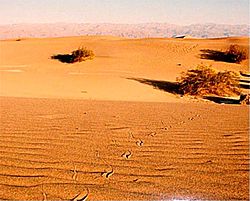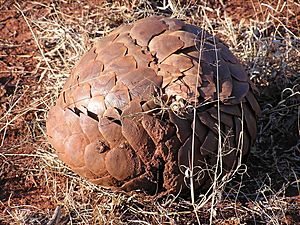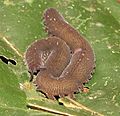Terrestrial locomotion facts for kids
Terrestrial locomotion is how animals move on land. Over time, animals changed to live on land instead of in water. Moving on land is different from moving in water. In water, there is a lot of push and pull (friction). On land, there is less friction, but animals have to deal with gravity. Gravity is the force that pulls everything down to Earth.
Animals move on land in three main ways:
- Using legs
- Moving without legs (limbless locomotion)
- Rolling their whole body
Contents
Legged locomotion
Moving with legs is the most common way for land animals to get around. Many animals use legs, like vertebrates (animals with backbones, such as humans, dogs, and birds) and arthropods (animals with outer shells and jointed legs, like insects and spiders).
Limbless locomotion
Some animals do not have legs but still move on land. These include some animals that live on land and some that live both on land and in water (amphibious). Since they don't have legs, these animals use their bodies to move. You might call this "slithering" or "crawling." A snail is a good example of an animal that moves this way.
Rolling
Animals do not have wheels like cars do. But some animals can move by rolling their entire body. This is often a way to escape danger. For example, a pangolin can roll into a tight ball and then roll away from a predator.
Fastest land animals
The fastest animal on land is the cheetah. It can run at speeds of about 104 kilometers per hour (64 miles per hour)!
Related pages
- Walking fish
Images for kids
-
Helix pomatia crawling over razor blades. Land snails crawl on a layer of mucus. This sticky way of moving lets them crawl over sharp things.
-
The velvet worm (Onychophora)
See also
 In Spanish: Locomoción terrestre para niños
In Spanish: Locomoción terrestre para niños








